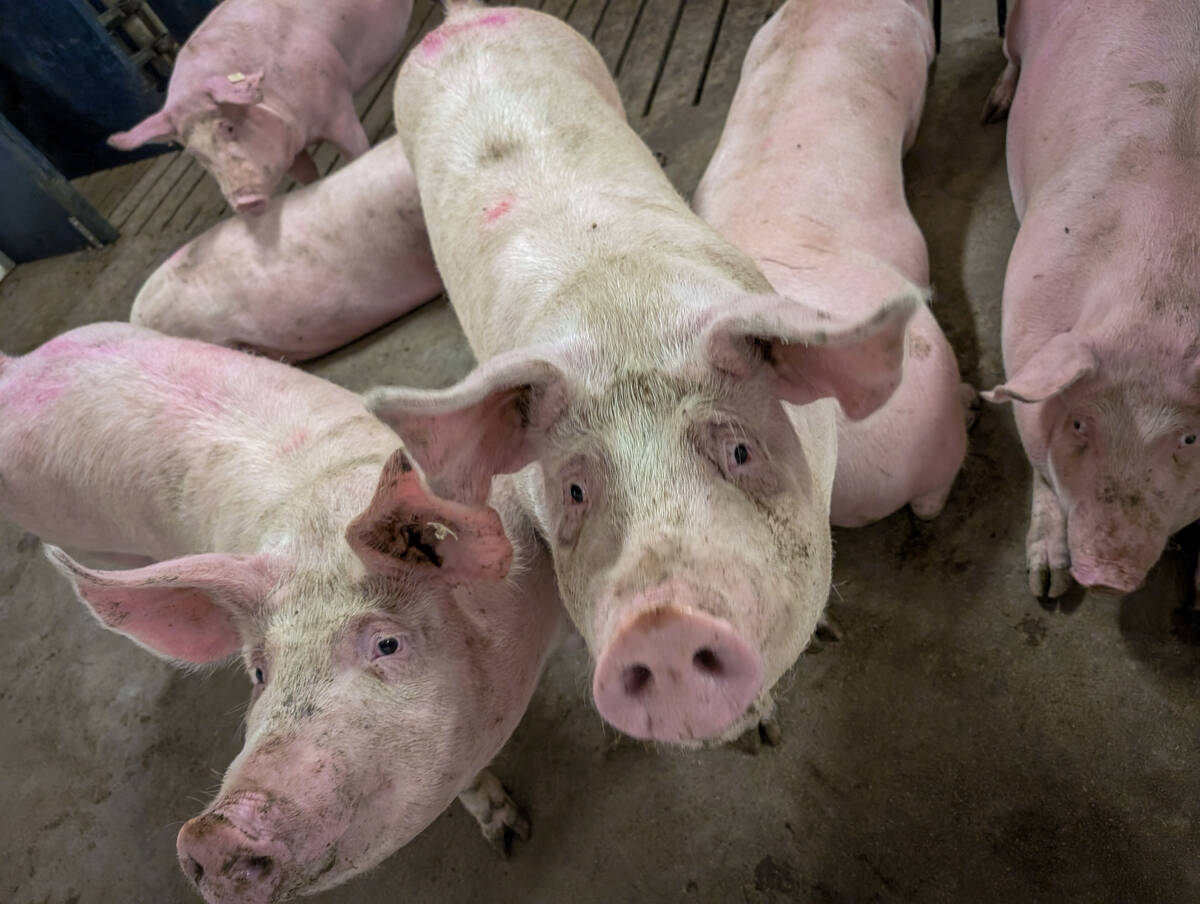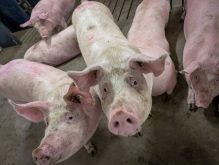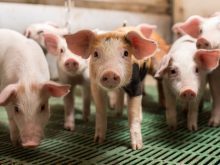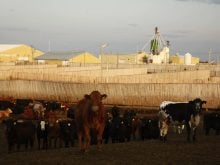When Leona DeKoter faced a rowdy crowd to defend a proposed slaughter plant in northeastern Calgary last week, she felt like a candle in the wind.
Yet the stay-at-home mother believes the farmer-owned Ranchers’ Beef proposal could benefit the northeastern side of the city. She has done her own research to assess how much odour or dust may settle over the area on the edge of the city limits by inspecting the site for herself.
She came away feeling comfortable with the proposal and pointed out that the nearby electrical generation facility and sour gas plant prohibit residential development because of the provincially mandated buffer zone of 1.2 kilometres.
Read Also

Pork sector targets sustainability
Manitoba Pork has a new guiding document, entitled Building a Sustainable Future, outlining its sustainability goals for the years to come.
“I went there myself and I just can’t see how it could possibly have any impact,” Dekoter said.
She also noticed cattle grazing on pasture surrounding the site.
“There is commercial livestock in town already and I haven’t heard people complaining about that,” she added.
As a college student she worked in a meat processing plant in Ontario.
“A lot of people equate animals with smell and don’t realize if it is a well-run facility you are not going to have that smell.”
She believes opposition is limited to a small group. However, she said the city did not give local residents enough time to assess the proposal.
“I think there are legitimate concerns about the lack of process and the short time to respond.”
The plant has been in the discussion stage since last March but residents complain the city planning department did not inform affected communities until early June. The frustration with the city was palpable at a community meeting organized by retiring alderman John Schmal on Sept. 15.
Schmal is opposed to the proposal and argues it should be located close to feedlots north of the city.
“Yes, I’m totally biased. I believe a slaughterhouse has absolutely no place in our city,” he said. “It clearly belongs in the rural areas.”
Besides a lack of public consultation, residents are also concerned about potential odour, dust and pressure on the city’s water and sewer system.
City engineers assured the crowd that the 900,000 litre requirement to operate the plant will not overtax the system.
Mary Axworthy of the city planning department said the city has submitted information to the Natural Resources Conservation Board and the Calgary Regional Health Authority to review questions over potential odour problems and other waste issues.
“Council has recognized more work is required on this application,” Axworthy said.
Bob Hornes, vice-president of development for Walton International, which wants to develop 2,500 acres in the same area for urban housing, said his company commissioned a private consultant from Minnesota to evaluate the odour models from engineering firms hired by Ranchers’ Beef. His study says their work is flawed and odour control mechanisms will be necessary.
Ranchers’ Beef is holding two open houses about the proposed site Oct. 22 and 23, following the municipal election. At least six candidates are running in the local ward, which is home to 77,000 people. All candidates are opposed to the plant.
Ranchers’ Beef is a consortium of 45 ranching families who put up more than $20 million for a plant to process specialty beef products. The proposed plant could handle 800 cattle per shift in an enclosed facility.
It would be 5.5 km away from the nearest communities, although eight acreages are located west of the property.
Ranchers’ Beef chair Art Price of Sunterra Farms in Acme, Alta., said 17 to 20 cattle liners per day would arrive at the plant, where animals would be unloaded into an enclosed barn with a concrete floor. Trucks would be cleaned at an approved facility and manure would be hauled back to Sunterra for spreading.
He said in a later interview there could be added costs as the development moves through the approval process, but the company balks at being forced to conform to higher standards than other industries in the area.
“As long as the requirements are consistent with other similar requirements that are put on other industrial facilities, we will be able to deal with that,” he said.
“If we are singled out for onerous and unusual requirements that nobody else in the area is required to meet, then that would be punitive commercially.”
He said the location offered the best amenities and least impact on neighbours.
“There is this image that rural Alberta is all industrial. There are less residents near this facility in a four km area than any location we could conceive of within a (80 km) radius of the city.”
However, the company has also applied to the Municipal District of Rocky View to build the plant 300 metres east of the currently proposed site, which would take it out of city limits. That proposal is to be presented to the district council on Oct. 5.

















